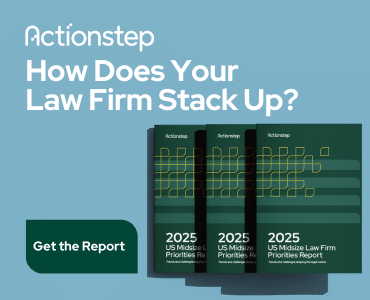For most lawyers who are actively engaged in marketing and business development activities, there’s no doubt that having a LinkedIn strategy is the most relevant and important social media platform to spend time on.
Why? It’s built for business. Its members are educated, affluent, and influential. Professionals are on the platform to make connections, consume content, and actively search for solutions. And, unlike most other social platforms, it’s growing fast. Nearly 125 million users joined LinkedIn from 2016 to 2018 (bringing its total user base to nearly 600 million), compared with just 9 million users who joined Twitter during the same period.
While most lawyers intuitively understand LinkedIn’s potential value (after all, in-house legal marketers and consultants like me have been beating the LinkedIn drum for years), many are merely browsers and not active participants. As a result, they’re missing out on massive opportunities to grow their professional networks, spread their ideas, and generate new business opportunities. According to LinkedIn:
- LinkedIn is the No. 1 channel for B2B marketers to distribute content.
- It drives more traffic to B2B blogs and websites than any other platform.
- 80 percent of B2B leads generated on social platforms come from LinkedIn.
- 91 percent of executives rate LinkedIn as their No. 1 choice for finding professionally relevant content.
LinkedIn is a target-rich environment if you’re a lawyer hunting for new business online. And if you’re not actively building your personal brand online in 2019, you’ll become increasingly invisible to today’s consumers of legal services, who are online and doing due diligence based on lawyers’ digital footprints.
Of course, you don’t have to use LinkedIn to effectively market your practice. But it’s a tool that helps leverage the most finite of resources — namely, time. It’s a way to scale yourself and your ideas at a time when most lawyers have little time available for one-on-one meetings, lunches, or other social outings. It’s not the only means of marketing that I recommend, but spending strategic, intentional time on LinkedIn is a great way to supplement other core initiatives.
A Three-Month Plan for Getting Started with a LinkedIn Strategy
The thing that stops most lawyers from getting started on LinkedIn is, well, getting started. For someone who is not accustomed to working on the platform, its features can be overwhelming — and LinkedIn adds new features almost every month. Getting started can be intimidating if you don’t know the difference between status updates and publishing, or connection requests and messaging.
Don’t worry. To use LinkedIn effectively you don’t need to use the whole platform all at once. Start slowly. Get comfortable. Gain confidence. Aim for sequential growth that eases you into the site’s many tools. All you really need to know are the fundamentals.
In cooking, it’s salt, fat, heat and acid. When it comes to LinkedIn, it’s people, content and consistency.
Here’s how to get started.
Month 1
Resolve to direct your activity to a specific niche. If you want to build a profitable book of business, it’s important to have a niche legal practice. Having a niche allows you to communicate your value proposition to a distinct and highly targeted market. Your message can be more relevant to your audience, and penetrate the conversation going on in the industry you’re focused on. You can become an insider who’s trusted, not an outsider held at arm’s length. The same holds true if you want to have success on LinkedIn. From making connections to sharing content, you’ll attract attention and build trust only if your activity is focused on a defined, narrow industry niche.
Craft your profile. The point of spending time on LinkedIn is to make connections with those in your niche market, create awareness of your personal brand and position yourself as an expert. The connections you make and the content you share should help lead people back to your profile. The problem is that most lawyer’s LinkedIn profiles read like online resumes heavily biased toward education and practice area descriptions — in other words, information that’s largely irrelevant to a prospective client or referral source. Instead, your profile should make it clear what problems you solve and the unique value you provide to members of your specific market niche. Speak the language of your audience, not the language of a lawyer, in your profile.
Month 2
Build your network. Once you’ve optimized your profile, find members of your target audience, and invite them to connect. LinkedIn is a big, powerful search engine for finding your ideal audience. You can use LinkedIn’s Search function to search for people and filter results by factors including job title, geographic location, industry type, company name, and school, among other things. If you know with great specificity who you serve, then the job of finding people with whom to connect using LinkedIn’s tools becomes much easier and more effective.
Block time for LinkedIn. If marketing yourself and making connections online is a priority, you need to block time for it — even 10 minutes per day — on your calendar.
Like, comment on and share other people’s content. There’s a concept called the “1% Rule of the internet” that suggests that 1 percent of people account for almost all of the content and activity online and the other 99 percent are, more or less, passive bystanders. This seems to hold true on LinkedIn as well. Start to become visible on LinkedIn, and get comfortable engaging on the platform, by liking, commenting on, and sharing the content and updates of those in your network. This will put you on their radar screen and make it more likely that they will reciprocate in a similar manner when you start sharing content of your own.
Month 3
Create and share content. Lawyers who have the greatest success on LinkedIn use the platform to position themselves as thought leaders. Because they are directing their activity toward a specific niche, they develop a following and a reputation as an expert among potential buyers of their services when they share valuable insights on the platform.
There are several ways to share content with your LinkedIn network:
- If your content is published on another platform, such as your firm’s blog or a third-party website (like an industry or association publication), write a short summary and share the article’s URL using the “LinkedIn Status Update” in your LinkedIn Profile. If someone from your network “likes” or comments on your update, then it will be shared with their network. The more likes you earn, the more broadly your content will be spread.
- You can also publish content directly on LinkedIn’s publishing platform. All LinkedIn members have access to the publishing tool, so it provides a great opportunity to expand your reach beyond your immediate network. (To learn more about how to create content that spreads on LinkedIn, here are some best practices.)
- Keep in mind that you don’t always have to create your own original content on LinkedIn. Add value to your network by curating and sharing articles addressing news and updates of relevance to your niche audience. This is an easy small win that takes little effort but pays big dividends.
Engage in dialogue online. All the work you will be doing on LinkedIn to carve a niche, create and share content and create awareness of your personal brand is building toward opportunities to generate business. Like most other social media platforms, LinkedIn offers users the opportunity to interact directly with contacts through its Messaging service. Begin reaching out to members of your network directly, but do so in a way that serves their interests (and yours as well, but in an indirect way). Offer to provide a digital resource or make a helpful introduction — seek to add value to get the conversation started.
Take conversations offline. Digital platforms are great for prospecting and establishing relationships, but as we all know business development for legal services is still an intensely personal endeavor. Opportunities are created online, but business is closed offline. When a potential client or referral source requests to connect with you on LinkedIn, if you notice someone frequently liking or commenting on your updates, or if someone engages with you on LinkedIn Messaging, tactfully suggest continuing the conversation offline. One of the most effective ways to use LinkedIn is to set up in-person meetings with members of your network when you’re traveling to a city in which they reside.
Just as you would in any networking setting, suggest an introductory phone call, coffee meeting, or another meetup outside of LinkedIn. Not every interaction will lead to success, but that’s true of every marketing endeavor. The ROI is often higher on LinkedIn, however, because you can make progress in 10-minute daily increments without ever leaving your desk.
You Might Also Like:
- “LinkedIn: Take Time to Tell Your Story” by Susan Kostal
- “How to Become a Thought Leader” by Jay Harrington
- “Guest Posting: A Powerful SEO Hack for Lawyers” by Jay Harrington
- “Five Ideas for Guest Posting” by Susan Kostal
Illustration ©iStockPhoto.com

















